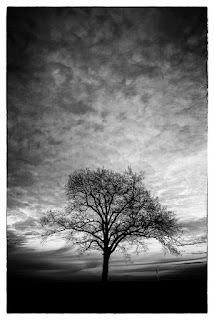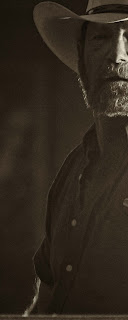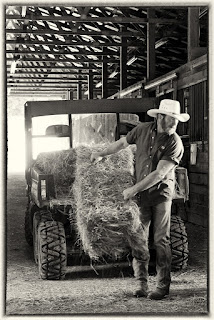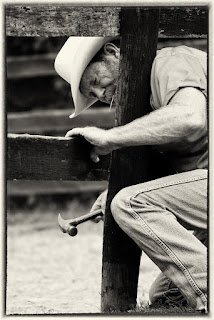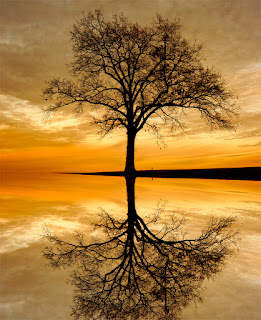The past winter season has rekindled memories from seasons past. Many of my photography friends have ventured out to explore and capture amazing images and memories of various kinds of waterfowl found by the thousands harboring inside nearby wildlife refuges. Seeing their work along with their accounts of what they experienced brought back a memory from long ago...a memory with a profound impact. I have no photographs from that day, but have substituted a single photo that closely resembles what I saw. Hopefully, the written words alone will stir fabulous images within your mind as you read them. Please enjoy this look back on an amazing day..."When Nature Wins"
Never again would a sunrise simply be a sunrise. It would be a unique moment of time and place forever bound and tested against that morning...forever etched as a defining principle of what an outdoor experience should be.
Reposted from December 2010
********************************************************************************
When I stepped out of the warm cab of my truck and into the chill of that pre-dawn morning air, little did I suspect how this day would be unique. The air was light and crisp and well beyond the point of being cold and I shivered as I looked toward the still dark sky across which spread the silvery haze of the Milky Way. I was to meet an old friend here on the northwest side of Canton Lake, in Northwestern Oklahoma, for some late season goose hunting.

Forewarned of his late arrival, I set about performing the well rehearsed motions of suiting up getting ready for the day's hunt. During previous outings we noticed a few hundred Canada Geese followed a predictable pattern each morning and afternoon. If they continued using that same pattern we hoped to ambush one or two as they flew low over a spit of land that extended a couple hundred yards into the lake. The cover was good there with a cluster of knurled willow trees on the point and copious amounts of tall grass around the perimeter. The lake was low that season so the walk in was easy.
A thin layer of ice along the shallows crunched under foot as I trudged along the edge of the peninsula. I carried no decoys, for we planned on remaining mobile and adapting to the movements of the geese when the opportunity presented itself. I settled between the willow trees and leaned back into a comfortable position long before the first vestiges of daylight became apparent. There was an uncommon calming silence that pervaded over the lake...no wind...no sound...no movement on the lake...only the soft rush of condensed breath set aglow by the starlit sky.
Time slowed under the canopy of that cold and dark morning. I felt small and insignificant sitting there alone. A slight sense of melancholy drifted over me born from a sleep deprived fatigue that hovered like a fog around my eyes. After several minutes passed, just above the horizon across the far side of the lake a faint glow became evident...a glow so pale as to be almost imperceptible...yet distinct and recognizable as the first sign of the approaching dawn.
Somewhere across the lake a group of mallards stirred and their chatter echoed across the silent waters. Overhead a flight of hard to see ducks, I think Buffleheads, whistled by winging from my left to right and then circled behind me disappearing into the void. More flights followed. A group of Teal then Pintail and more mallards whipped by...their beating wings whistling as they ripped through the crisp morning air. Unseen high overhead the haunting chattel of sandhill cranes added to the symphony that was now being orchestrated across the lake.
With each passing moment a new sound and activity of waterfowl was brought into the realm of that once still morning. Slowly...as in unison with the stirrings of the wildlife on and around the lake, the glow over the horizon changed texture and intensity.
A layer of thin clouds drifted low on the horizon and began to glow with a deliberate shimmer celebrated with layers of pastel blues and pinks intermixed with streaks of orange and red. The sunrise scene that was unfolding was perfectly imprinted on the mirrored surface of the lake.
A flight of hooded mergansers swooped in and sat down less than twenty yards in front of me. Their distinctive profiles a silhouette against the ever growing intensity of the breaking dawn. I was spell bound. I leaned my shotgun against the willow tree...and simply watched.
The once star-studded sky began to lighten and one by one each of those bright points of light began to dim...blink one final time...and disappear. By this time multitudes of waterfowl were stirring...darting in front of, behind, and all around me. I couldn't believe what was unfolding. It was like an image taken from an artists canvas...yet no words...no photograph...no imagination could capture the majesty of this morning.
The combined effects of the sunrise...its reflection on the calm waters of the lake...the chaotic movements of countless waterfowl could not have been choreographed more splendidly than the spontaneous explosion of time and place presenting themselves across this...the best of nature's theaters.
Across the lake on the horizon, what began as a faint whimper of light had now progressed to a bold, new amber glow. Jets of red and orange ripped through and danced across the low clouds. The lake and sky were ablaze. Thousands of ducks and geese flew here and there in a confused contrast against the unfolding serenity of that magnificent morning.
Unexpectedly...like when a conductor raises his baton...a momentary hush fell over the morning and all was very still. No ducks flying, no sounds, just a calm. A moment later the sky filled with brilliant light as the sun thrust its burning globe above the horizon...the silence was instantly ripped apart when thousands of waterfowl exploded into flight...their squawks and chattering filled the silence...their motion across the blazing sky, their reflections moving across the lake added a staggering depth and perspective to the morning. It was the single most amazing sight I have ever witnessed.
At that moment I realized something unique was unfolding not only around me...but within me as well. Never before had it become so evident. From all the years of hunting and fishing...from all the priceless moments spent outdoors...
a moment like this was the moment I was seeking. To witness that incomprehensible complexity of nature played out within the indescribable simplicity of a magnificent sunrise...to truly understand for the first time how I was a part of God's creation given the privilege to witness and enjoy the splendid array of what life in him has to offer. This was what it was all about. Far too many times the most important things in life had been lost in the vacuum of time and place. Never again would that happen. Never again would a sunrise simply be a sunrise.
It would be a unique moment of time and place forever bound and tested against that morning...forever etched as a defining principle of what a relationship with God is all about. Few images can stir the soul like witnessing God's creative hand as it unfolds across his natural palette. Every morning...every new dawn...is a unique creation there for the taking...there for all to share. It is just a matter of being still long enough to experience it.
My partner eventually arrived. We stood together near those willow trees watching the last spectacular moments of what I had been privileged to observe from its beginning. I can still see him silhouetted against that blazing sunrise on that cold morning with smoke from his pipe hovering in the air around him. He looked over toward me and smiled with his characteristic grin exposing his smoke stained teeth, "Boy, Boy", is all he said. That is all he needed to say.
By that time the sun had fully risen the explosion of activity slowly subsided. In spite of observing so many waterfowl, and maybe because of all the activity, and not without trying...we failed to bring home any game on that day...even so, it was a fitting end to a perfect, unforgettable day afield. Somehow it seemed appropriate that nature...so elegantly endowed...so perfectly displayed as was the intent of its creator...would win on this day.
Keith
*********************************************************************
Epilogue: T
his story brings back many wonderful memories from times past. My friend Ralph who met me up there that day passed away many years ago. A World War II veteran, husband and father, he became a mentor to me in many ways. He never lectured, he simply showed by example what it meant to be an outdoorsman. His memory as well as countless memories spent afield with him and others have not been forgotten, just lain dormant thru time. This one single morning may indeed have been the most spectacular single day afield we ever experienced. That is why I chose to write it down because of the special nature of the event. Even though I miss those days and my friend, the memories we created by exploring nature at its best and the influence he contributed will always be with me.
